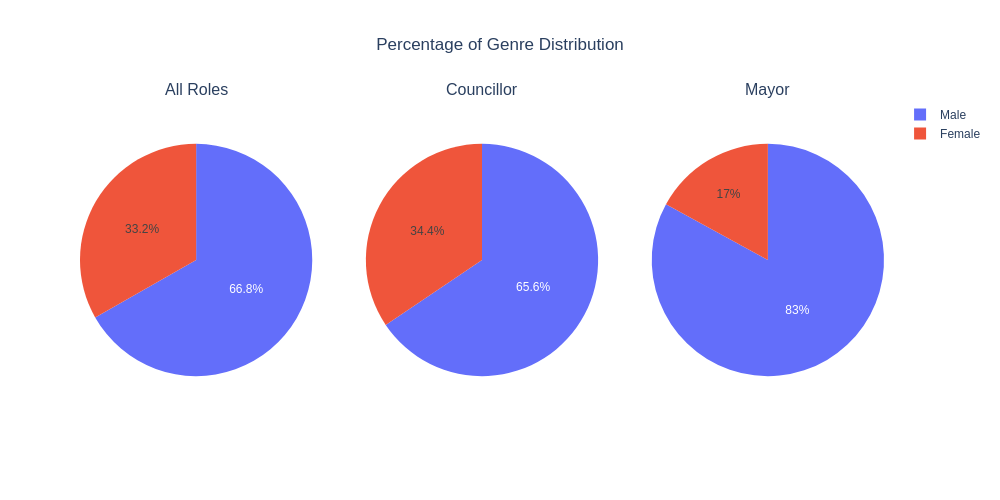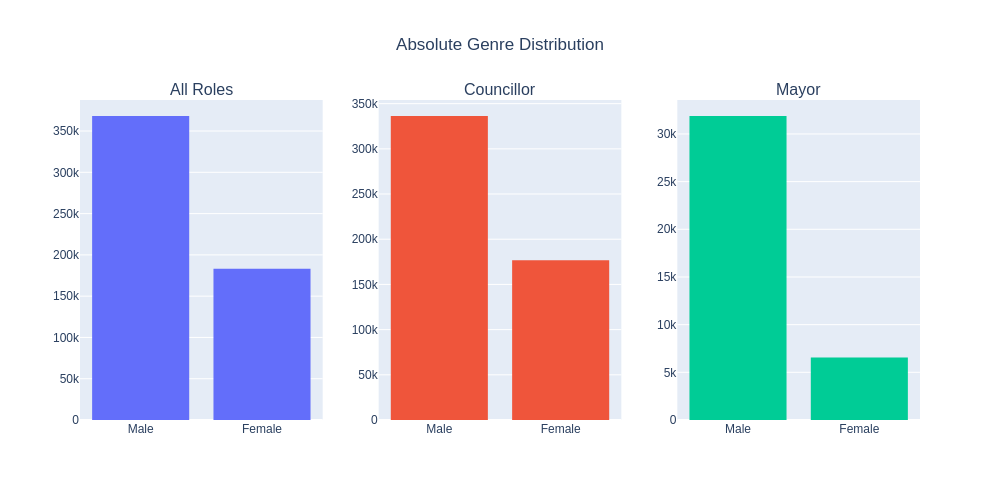This is a simple EDA (Exploratory Data Analysis) on candidates for the 2020 election in Brazil, which elects Mayors and City Councillors. At the time of this work, the elections haven’t taken place yet. We will be looking at gender and race distribution among candidates of both roles. For details on the code used, please check this jupyter notebook. Candidate data used for this analysis can be found here, and the racial distribution data for Brazil here.
Gender distribution
First, let’s take a look at gender distribution for candidates for these roles. A perfect distribution (a distribution that represents the population in general) would, of course, be a 50–50 split between males and females. The charts below demonstrate gender distribution for candidates of all roles, as well as for each role separately, in both absolute and relative terms.

Image by author
The plots above demonstrate gender disparity in political representation in candidates across Brazil; despite composing 50% of the population, women constitute only 33.2% of the total number of candidates and are thus under-represented in the candidate pool. This disparity is even bigger in the distribution of candidates for Mayor (a more important role, with women contributing only with 17% for that role). Now, we will take a closer look by analyzing each state with respect to their profile on gender representation.
#inequality #exploratory-data-analysis #data-science #brazil #elections
